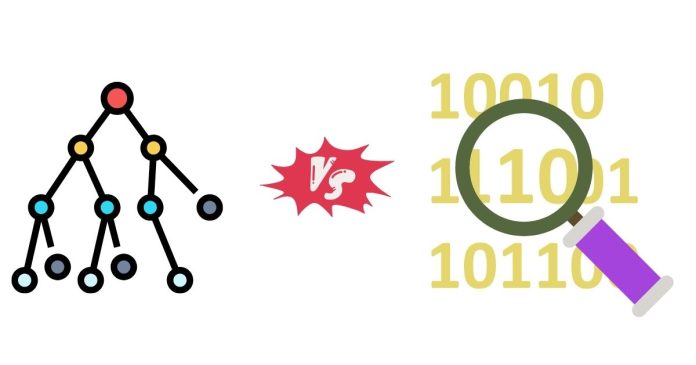When it comes to data structures in computer science, binary trees and binary search trees (BSTs) are foundational concepts. While they may sound similar, these two structures serve different purposes and have distinct properties. In this blog post, we’ll explore the differences between binary trees and binary search trees, their characteristics, and their respective use cases.
What is a Binary Tree?
A binary tree is a hierarchical data structure in which each node has at most two children, referred to as the left child and the right child. It does not impose any specific order or constraints on the values stored in the nodes.
Key Characteristics of Binary Trees:
- General Structure: Each node can have 0, 1, or 2 children.
- No Ordering: The values of the nodes do not follow a specific order.
- Tree Types: Binary trees come in various forms, including full binary trees, complete binary trees, and perfect binary trees.
Applications of Binary Trees:
- Representing hierarchical data such as organizational charts.
- Implementing expression trees for arithmetic expressions.
- Representing file systems.
What is a Binary Search Tree (BST)?
A binary search tree is a specialized form of a binary tree that imposes a specific ordering property:
- The value of the left child must be less than the value of the parent node.
- The value of the right child must be greater than the value of the parent node.
This property applies recursively to all nodes in the tree.
Key Characteristics of BSTs:
- Ordered Structure: BSTs maintain an order, which makes searching efficient.
- Unique Values: Each node usually contains a unique value to avoid duplicates.
- Efficient Operations: BSTs support efficient operations like searching, insertion, and deletion.
Applications of BSTs:
- Implementing dynamic sets and lookup tables.
- Solving problems requiring sorted data.
- Serving as the backbone for various advanced data structures like AVL trees and red-black trees.
Key Differences Between Binary Tree and Binary Search Tree
| Aspect | Binary Tree | Binary Search Tree |
|---|---|---|
| Structure | General hierarchical structure. | Ordered hierarchical structure. |
| Ordering | No specific order for node values. | Left child < Parent node < Right child. |
| Search Efficiency | Inefficient for searching operations. | Highly efficient for searching (O(log n)). |
| Duplication | May allow duplicate values. | Typically does not allow duplicates. |
| Applications | Used in general hierarchical data modeling. | Used for dynamic datasets and sorted data. |
| Complexity | Traversal takes O(n) in worst cases. | Search, insertion, and deletion take O(log n) (balanced trees). |
Example
Binary Tree Example:
1
/ \
2 3
/
4
In this binary tree, the values are not arranged in any specific order.
Binary Search Tree Example:
8
/ \
3 10
/ \ \
1 6 14
In this BST, all left child values are smaller than their parent, and all right child values are greater.
Which One Should You Use?
- Binary Tree: Use a binary tree when you need a general-purpose hierarchical structure without strict ordering.
- Binary Search Tree: Choose a BST when you need fast search, insertion, and deletion operations, especially for sorted data.
Conclusion
While binary trees and binary search trees share a similar foundational concept, their purposes and implementations differ significantly. Understanding these differences is crucial for selecting the right data structure for your specific problem, ensuring efficiency and scalability. Whether you’re dealing with hierarchical data or need fast searches, knowing when to use a binary tree or a BST will help you design better algorithms and solutions.


